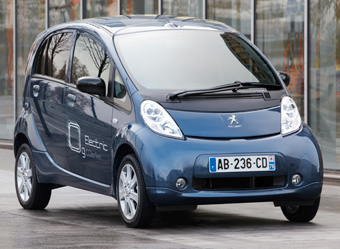
PARIS – The European auto makers’ association, the ACEA, is objecting to Europe’s vision of its transportation future, which would ban vehicles with internal-combustion engines from cities by 2050.
Europe needs “a competitive transportation system without congestion and with fewer emissions of (carbon-dioxide),” says Transportation Commissioner Siim Kallas.
Kallas presented a white paper this week, on behalf of the European Commission, outlining what Europe’s transportation should look like in 2050 and how it should get there. Among the major recommendations:
- ICEs should be banned in cities in 2050, with half of them gone by 2030.
- Some 30% of road freight being transported more than 186 miles (300 km) should be switched to rail or water by 2030, and 50% by 2050.
- Europe should complete a region-wide, high-speed rail network.
- Airplane fuel in 2050 should be only half-based on petroleum.
- Core airports and shipping ports should be connected to railroads.
- Technology should be developed to manage the transportation of people and freight over a variety of modes.
- Transportation users should pay the full cost of transportation.
The ACEA says the white paper’s goals of specific changes in transportation are arbitrary measures.
“A simple call for a decrease in the use of motor vehicles will not provide the easy solution it appears to be, because there will not be less demand for the flexible solutions that road transport provides in contrast to other modes,” ACEA Secretary General Ivan Hodac says in a statement.
However, the white paper’s recommendation to eliminate ICEs in cities is encouraging for auto makers that are betting heavily on electric cars for the future. “Urban transport is responsible for about a quarter of CO2 emissions from transport, and 69% of road accidents occur in cities,” the report says.
“The gradual phasing out of ‘conventionally fueled’ vehicles from the urban environment is a major contribution to significant reduction of oil dependence, greenhouse-gas emissions and local air and noise pollution. It will have to be complemented by the development of appropriate fueling/charging infrastructure for new vehicles.”

But the ACEA remains cautious on the subject. “It is general practice that European Union policy avoids predicting prematurely technology ‘winners,’ and the white paper must adhere to that,” says Hodac, urging a technology-neutral policy.
The white paper takes the approach that curbing mobility is not an option and that oil will become scarcer in future decades. “As the International Energy Agency has recently pointed out, the less successful the world is in de-carbonizing the greater will be the oil price increase,” the report says.
“In 2010, the oil import bill was around E210 billion ($296 billion) for the EU. “The challenge is to break the transport system’s dependence on oil without sacrificing its efficiency and compromising mobility.”
The white paper argues that because infrastructures take so long to develop and because trains, planes and ships last for decades, the situation in 2050 will depend on choices made now.
John Gardiner, director-news operations for Ford of Europe, tells Ward’s the controversial proposal doesn’t take into account several important factors, including a clear definition of what constitutes a major urban area.
“Is it a city of 10 million or 100,000?” he says. “(And if) you do get rid of ICEs in city centers and replace them with electrified vehicles, you’re not reducing the number of vehicles on the road.”
Gardiner says the auto maker would prefer the EU concentrate its resources on improving the road infrastructure, which greatly would reduce congestion in areas such as downtown London.
An outright ban on ICE vehicles, although decades away, would do little, if anything, to eliminate congestion or reduce harmful emissions, he says. “The overwhelming majority of the population in Europe lives in urban areas. So if you have this sudden shift, what does it mean for the generation of electricity to power EVs?
“If you’re falling back on fossil fuels, you’re just moving the source of pollution.”
Rather than fossil-fuel powerplants, electricity for EVs could be generated by nuclear reactors, some experts have said. However, the nuclear disaster in Japan stemming from the March 11 earthquake and tsunami has spurred many countries to reassess their nuclear power programs.
Gardiner says the nuclear question is not one for auto makers to decide. But if the EU is serious about the proposals outlined in its white paper, it would encourage input from all parties that stand to be affected.
“There’s a huge fundamental issue that you have to look at and bring in stakeholders to look at and come up with something that’s practical,” he says, noting such input would come from auto makers and energy providers.
The white paper’s proposal ultimately seeks to limit consumers’ choice in what vehicles can be purchased, Gardiner adds, noting this is another major sticking point for Ford. “You’d be dictating what consumers could drive, so the market mechanism would be undermined.”
Another issue that must be addressed is whether EV technology is ready to displace ICEs. While Ford and other global auto makers have made substantial progress in such technologies, they are not yet considered a practical replacement for the ICE.
Gardiner is quick to point out the proposals outlined in the white paper now are open to debate and not yet law. The next step in the process is a thorough review by EU member countries, which likely will add their own suggestions.
Ford of Europe also will make its issues with the white paper known. Says Gardiner: “We want to help, but the question is: Are these policies the right way forward?”
– with Byron Pope in Detroit



